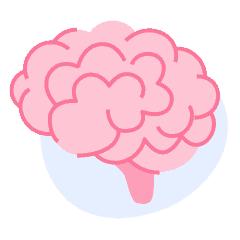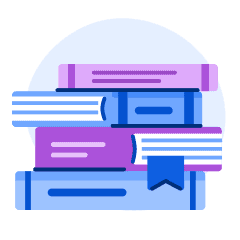Have you ever been asked if you were “left- or right-brained”? Or what your “learning style” is? As it turns out, these concepts don’t tell the full story about how you learn. Best practices in the education sector are always evolving, and we’re here to help debunk five common myths that might be keeping you from excelling as a student!

Myth 1: You Have Only One Learning Style
Traditional learning styles categorize everyone as Visual, Auditory, or Kinaesthetic learners. The idea behind these styles was that students would best understand a concept using their preferred learning style. For instance, it was thought that a Visual student would learn better from observing something through pictures, charts, and graphs. In contrast, Auditory students would learn better by listening through lectures and group discussions. Meanwhile, Kinaesthetic students would prefer hands-on experiences through personal practice, examples, or simulations.
Although tailoring a subject to each student’s learning style was an innovative concept a few decades ago, studies show otherwise. As it turns out, matching the subject being taught to a specific learning style matters more than each individual student’s preferred learning style. For example, biology and math lessons may be better understood through Kinaesthetic and Visual practices. On the contrary, music and language lessons should incorporate Auditory exercises to improve students’ performance.

Myth 2: Left- and Right-Brain Dominance
Another popular myth is that our brains are either left-dominant or right-dominant. According to this notion, someone who’s left-brained is quantitative, pays attention to detail, and is ruled by logic. They tend to do well in subjects like math and science. Meanwhile, someone with right-dominant features would be described as intuitive and a creative thinker, thriving in subjects including languages, history, and art.
While different parts of the brain do specialize in different tasks, the brain is a lot more complicated than being logical on the left and creative on the right. One study shows that for the most part, activity is similar on both sides of the brain regardless of someone’s personality. meaning our brains are more similar than they are different. While students can have different personalities, likes, and dislikes, it’s important that these labels don’t get in the way of learning.

Myth 3: We Only Use 10% of our Brains
Were you ever told that we only use 10% of our brains? While this saying does lead people to think of their untapped potential, it’s more of an analogy than a scientific fact. While it’s true that different areas of our brains have specific functions, it doesn’t mean we don’t use them all at different times. Our brain is responsible for our movement and balance, breathing, heart rate, and solving math problems (sometimes, all at once!)
The fact is: we do use the majority of our brains. Most of your brain is active almost all the time, even when you’re sleeping! While this saying can sometimes motivate students to do better (and as a concept, has led to some pretty fun movies), it’s not scientifically true and can do more harm than good.

Myth 4: Memorization is Key to Taking Tests
Have you ever forgotten to study before a test and tried to memorize your textbook at the last minute? Memorizing facts may sometimes work, but it doesn’t give your brain time to process the new information and make connections with your past learning.
While there are instances when memorization is critical, such as remembering facts, figures, and formulas, taking tests requires students to employ critical thinking skills. Overall, students are less likely to succeed based solely on how much they’ve memorized.
For effective test-taking:
- Understand the main concept being taught, and be prepared to describe different examples.
- Practice applying learned material by thinking of situations where you might use what you’re learning.
- Give yourself enough time to practice before your test.

Myth 5: Re-reading and Highlighting are Effective Study Strategies
While highlighting and re-reading your material can feel productive, it’s a study strategy that encourages memorization, like our previous point. Using tools like highlighters and re-reading information can still be helpful to remember important information. However, there are better study strategies to help you the next time you have a test.
Research shows that testing yourself, generating answers, and allowing enough time to practice is a lot more effective than re-reading and highlighting your notes and textbooks. Skills like critical thinking, applying principles to solve problems, and putting concepts into your own words will go beyond the classroom and help you for the rest of your life.
Want to learn more about popular study methods? Check out our article!

While these myths have serious staying power, how we learn is much more nuanced. As our understanding of learning evolves, old labels can still get in the way of how we study, learn, and are perceived—but don’t let them stop you! Use this knowledge (and our tested and true study tips) to help you on your journey to becoming an international student.
Planning to study abroad? Check out academic institutions and programs on the ApplyBoard Platform!



